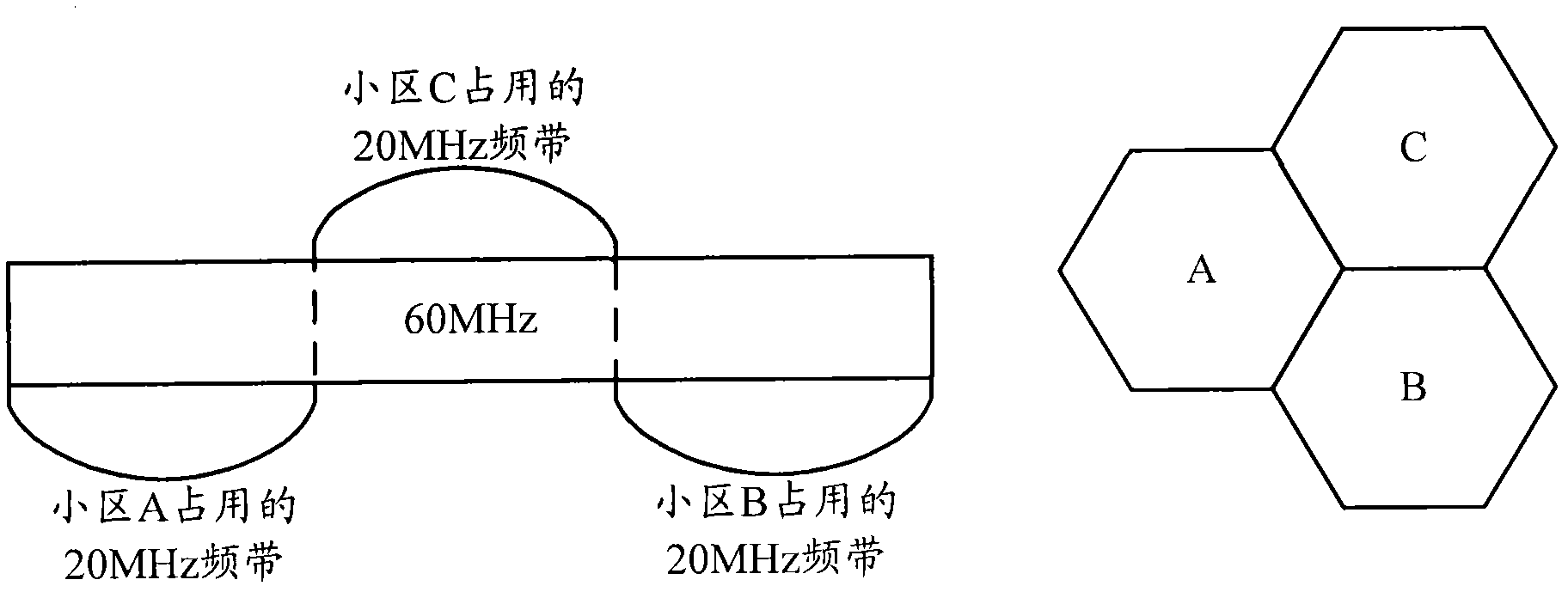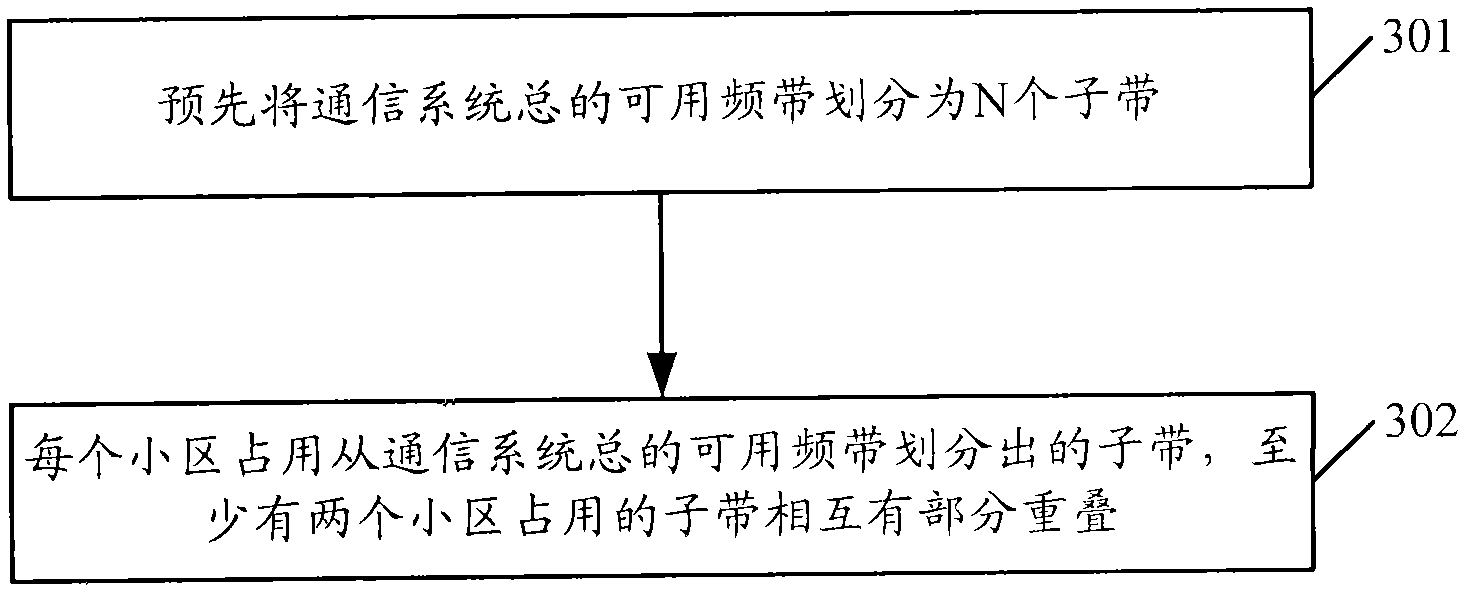Frequency multiplexing networking method and system
A frequency reuse and networking technology, applied in the field of communications, can solve the problems of edge user interference, low frequency utilization, large inter-cell co-channel interference, etc., to improve overall performance, improve frequency utilization, and reduce co-channel interference. Effect
- Summary
- Abstract
- Description
- Claims
- Application Information
AI Technical Summary
Problems solved by technology
Method used
Image
Examples
Embodiment 1
[0062] Figure 4 It is a schematic diagram of the first networking provided by the present invention.
[0063] exist Figure 4 In the system, the total available frequency band bandwidth of the system is 30 MHz, which is divided into 3 sub-bands, each of which is 20 MHz, and two parts overlap. The three cells at the same site occupy different subbands among the three subbands, for example Figure 4 As shown, cells A, B, and C occupy subbands A, B, and C, respectively.
[0064] Figure 5 It is a schematic diagram of the second networking provided by the present invention.
[0065] exist Figure 5 In the system, the bandwidth of the total available frequency band of the system is 15 MHz, which is divided into 3 sub-bands, each of which is 10 MHz, and two parts overlap. The three cells at the same site occupy different subbands among the three subbands, for example Figure 5 As shown, cells A, B, and C occupy subbands A, B, and C, respectively.
Embodiment 2
[0067] Figure 6 It is a schematic diagram of the third networking provided by the present invention.
[0068] Depend on Figure 6 It can be seen that when the bandwidth of the total available frequency band of the system is 40 MHz or 50 MHz, the total available frequency band of the system can still be divided into three sub-bands, and the three cells at the same site respectively occupy different sub-bands of the three sub-bands .
[0069] Compared with Embodiment 1, since the bandwidth of the total available frequency band of the system in Embodiment 2 is increased, the ability of the communication system to avoid interference will be improved, and the dependence on the inter-cell interference coordination (ICIC) algorithm and scheduling algorithm will also be reduced. will be further reduced to obtain better system performance.
Embodiment 3
[0071] Figure 7 It is a schematic diagram of the fourth networking provided by the present invention.
[0072] Such as Figure 7 As shown, the total available frequency band bandwidth of the system is 30MHz, which is divided into two subbands, subband A and subband B, each subband is 20MHz, and the two subbands overlap each other by 10MHz, cell A and cell B Occupy sub-band A and sub-band B respectively.
[0073] In the actual communication process, cell A preferentially uses the 10MHz frequency band of the left 1 / 3 of the entire bandwidth, that is, preferentially uses the part of subband A that does not overlap with subband B, and cell B preferentially uses the 10MHz frequency band of the right 1 / 3 of the entire bandwidth. That is, the part of the subband B that does not overlap with the subband A is preferentially used. When the cell load increases, each cell can use the overlapping portion for communication.
[0074] For example, when the load of cell A rises to a prede...
PUM
 Login to View More
Login to View More Abstract
Description
Claims
Application Information
 Login to View More
Login to View More - R&D
- Intellectual Property
- Life Sciences
- Materials
- Tech Scout
- Unparalleled Data Quality
- Higher Quality Content
- 60% Fewer Hallucinations
Browse by: Latest US Patents, China's latest patents, Technical Efficacy Thesaurus, Application Domain, Technology Topic, Popular Technical Reports.
© 2025 PatSnap. All rights reserved.Legal|Privacy policy|Modern Slavery Act Transparency Statement|Sitemap|About US| Contact US: help@patsnap.com



